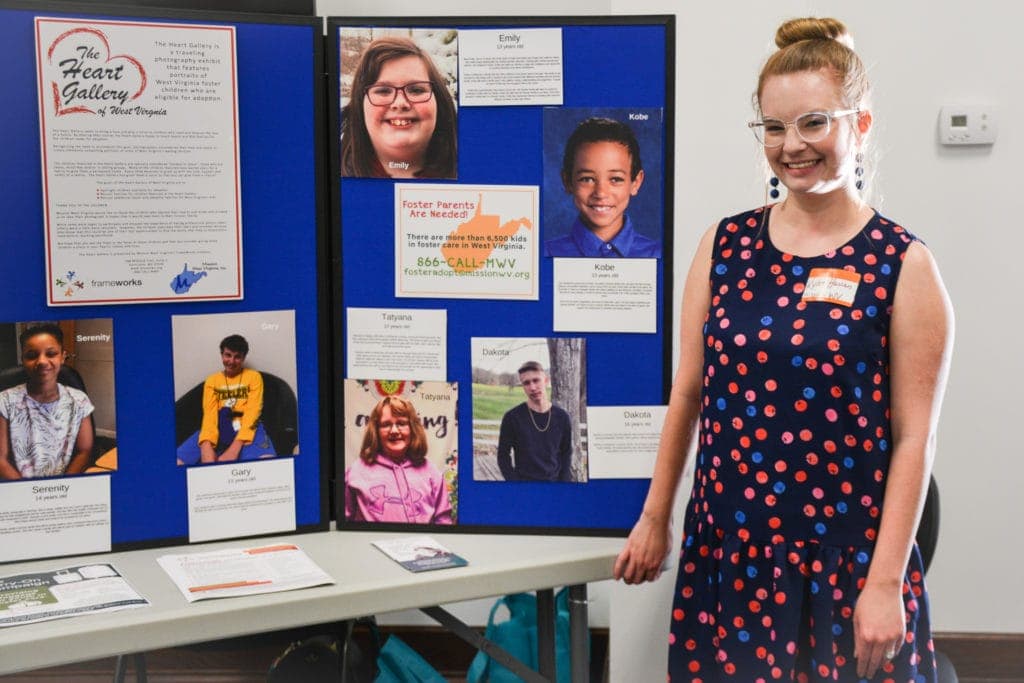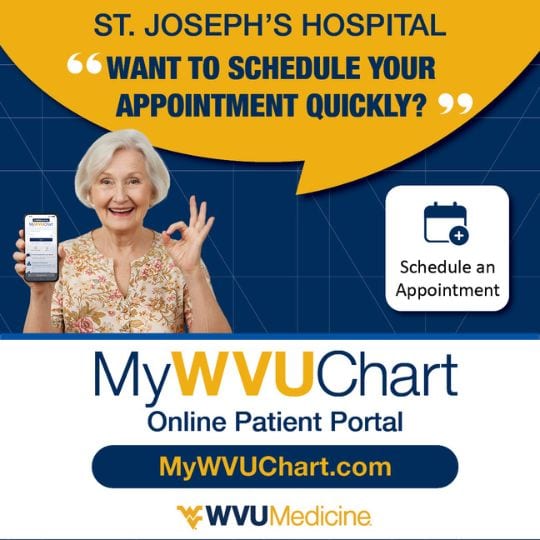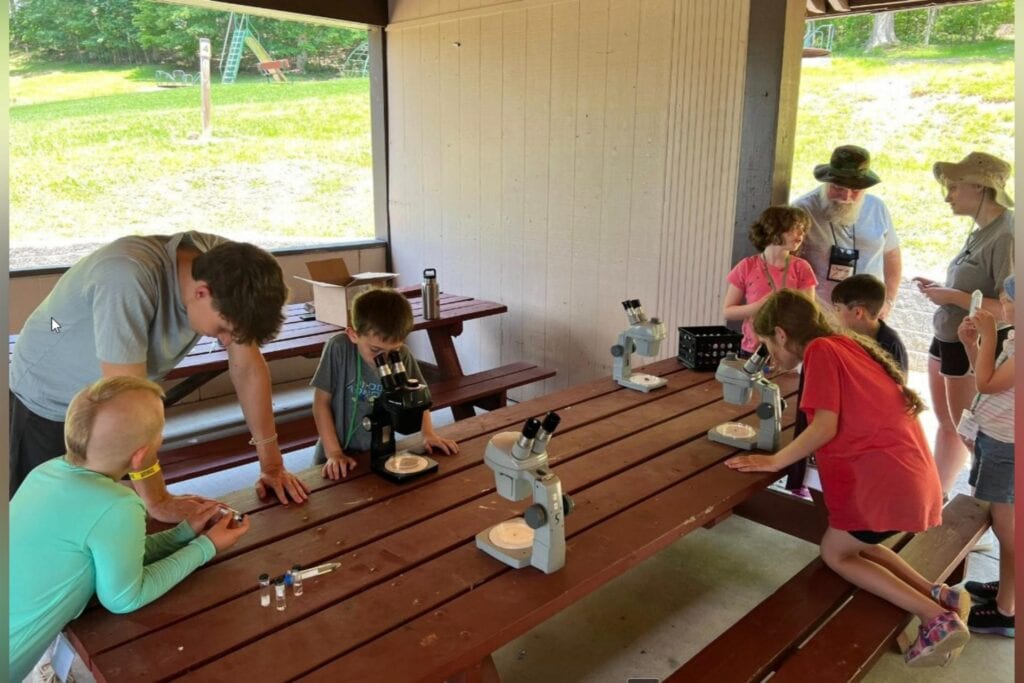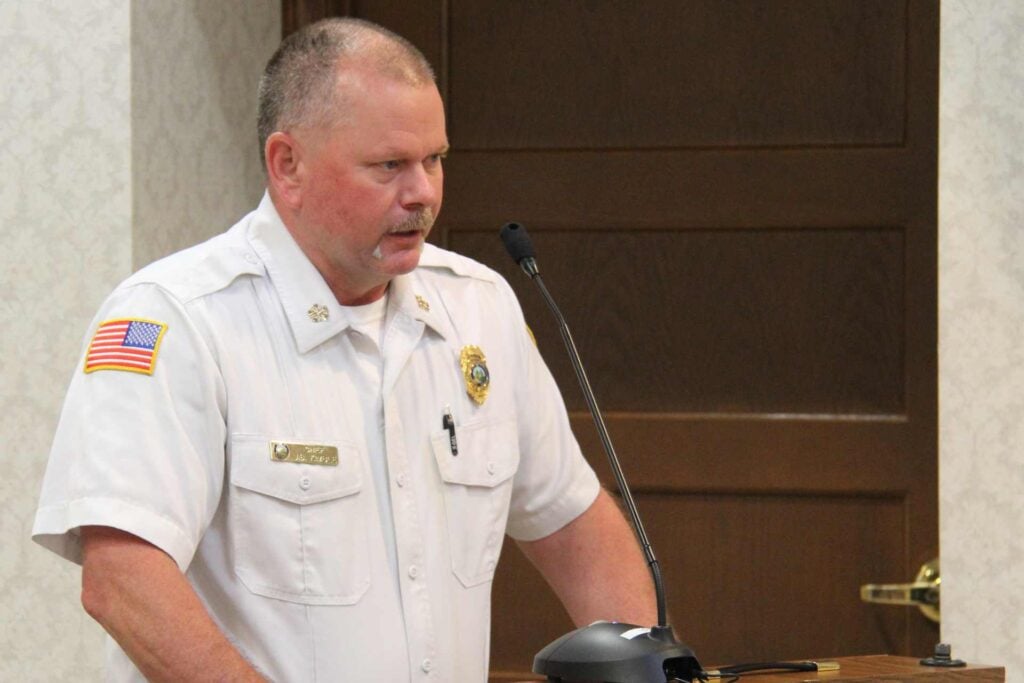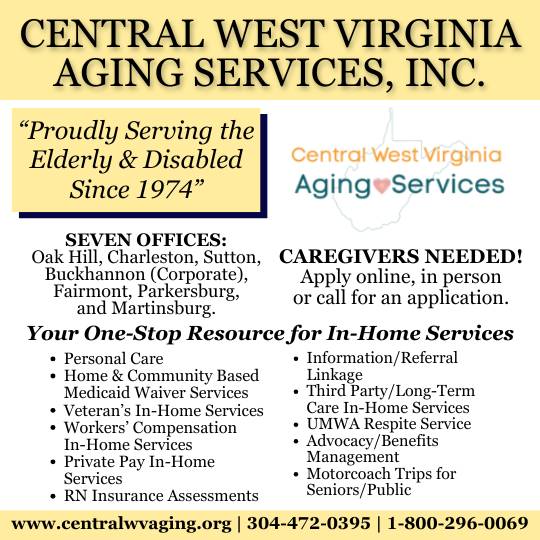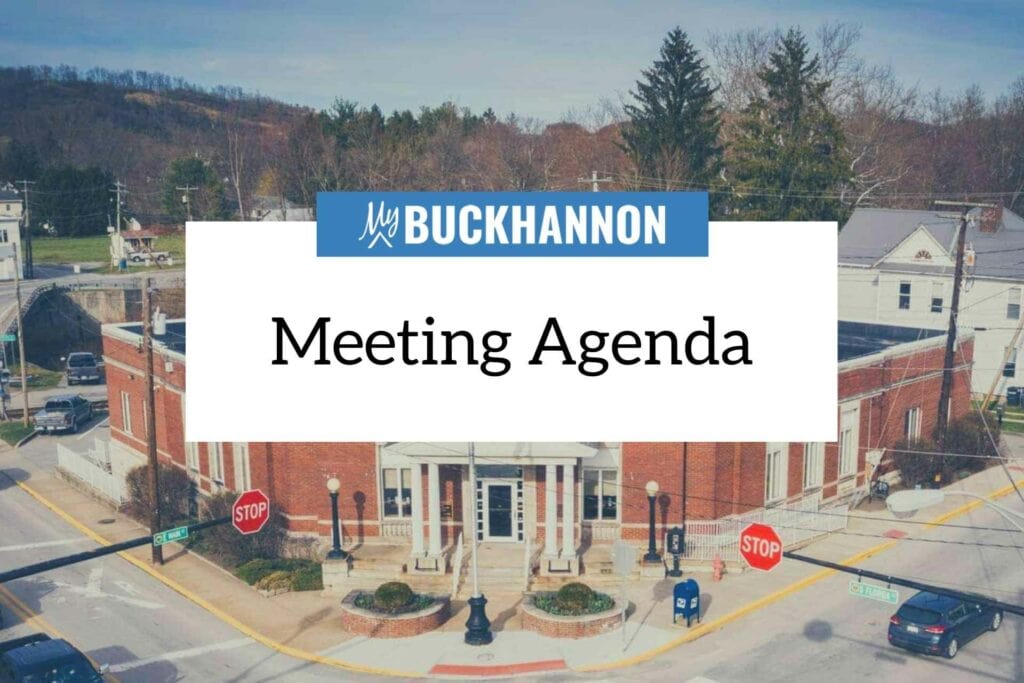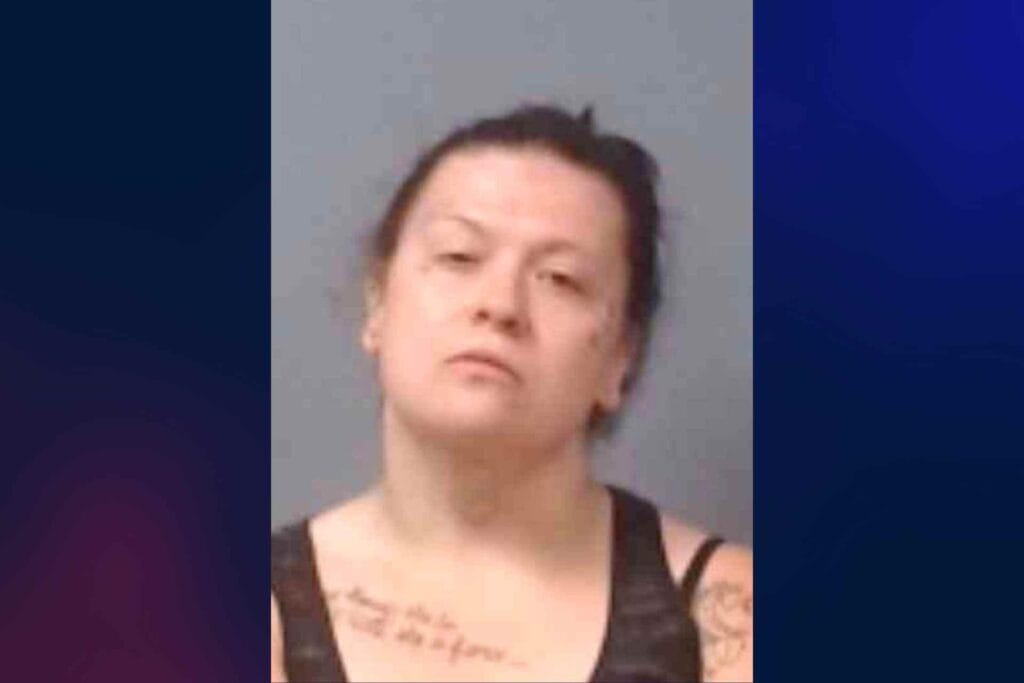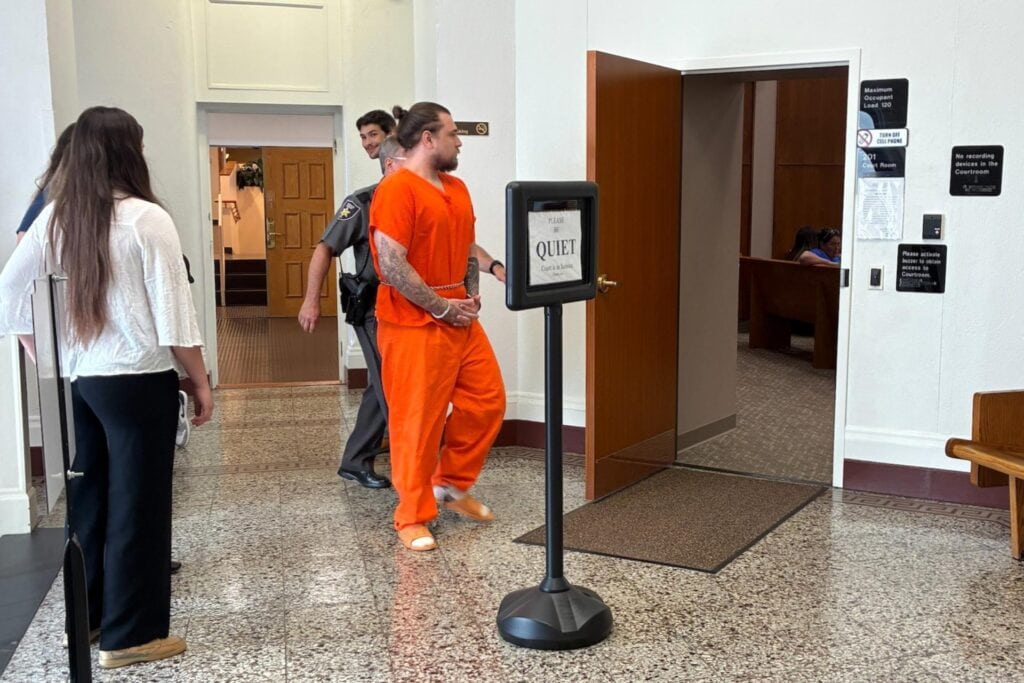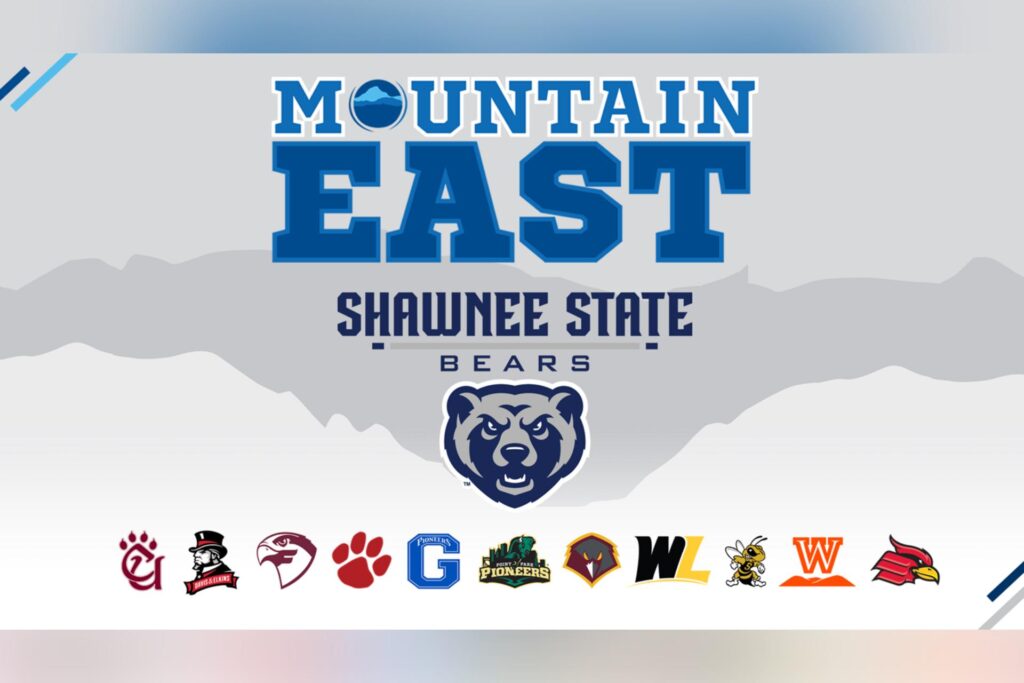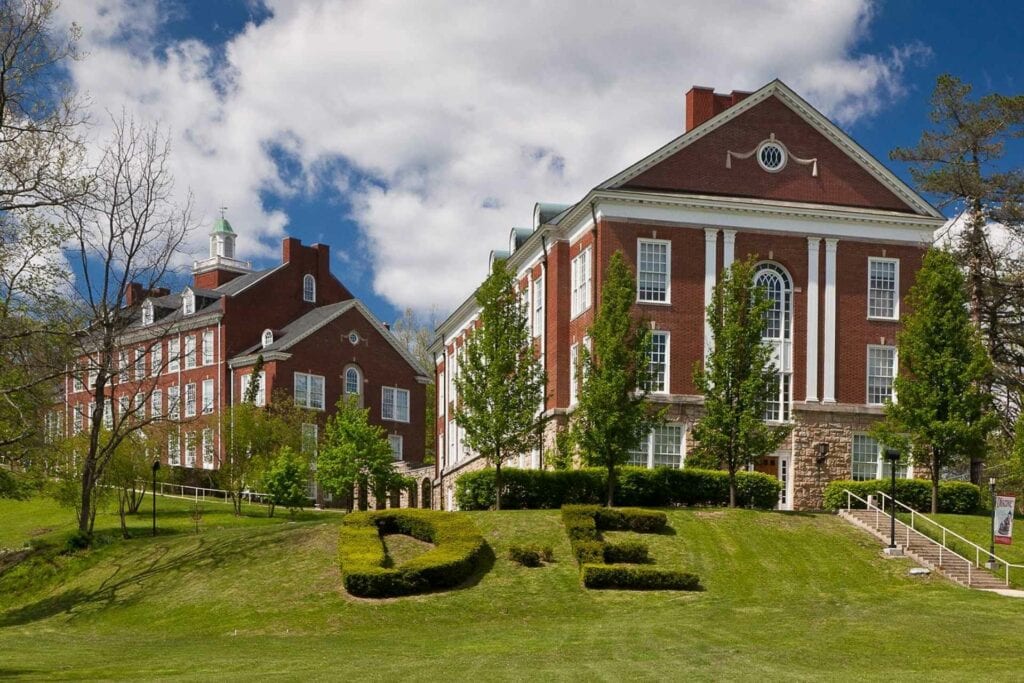BUCKHANNON – Kylee Hassan stands in front of a large, blue cardboard display featuring pictures of 10 children, most of whom are smiling brightly.
Next to each picture is a piece of paper listing the child’s name, age and some of her or his interests; one child likes to sing, and another enjoys sports.
Among them are 13-year-old Emily, 14-year-old Serenity and 16-year-old Dakota.
Hassan, the communications outreach director for Mission West Virginia, was just one of the multiple agencies ready to answer potential foster parents’ questions at Tuesday’s Fostering Hope open house at the Public Safety Complex.
One of the first questions she gets is about the nine children on that bright blue board – are they adoption success stories?
No, she says. Quite the opposite, in fact.
The 10 children depicted in The Heart Gallery of West Virginia are minors who have been in the foster care system for an extensive period. They’re all legally eligible for adoption, but so far, have yet to be paired with a qualified match.
Hassan explains that Mission West Virginia, a state agency that works to recruit and support foster families, has teamed up with the Wendy’s Wonderful Kids program to try to find families to adopt the children.
“These kids have been in the system for a very long time, so we have two workers from Wendy’s that are kind of like [the kids’] private investigators who will try to go back and find lost family members, teachers that the child may have really connected and try to find them a [permanent] placement,” Hassan explains. “A lot of these children are older youth, and they’ve been in the system for a long time, they have no potential matches and no family members that have stepped up, so we try to do some child-specific recruitment to try to get them adopted before they age out.”
Youth “age out” of West Virginia’s foster care system at 18, when they’re technically considered adults.
Hassan says the older a child gets, the tougher it sometimes is to interest parents or individuals in fostering or adoption.
That’s because people incorrectly assume older children – especially teenagers – have been placed in the foster care system due to their own behavioral problems.
“In reality, these kids are just innocent victims that are in there for no fault of their own, due to their parents,” she said.
Hassan says that while it’s understandable foster parents – especially those interested in eventual adoption – tend to prefer infants because they want to experience “firsts” with them, there are actually a lot of “firsts” through which foster/adoptive parents and older children or teens can bond.
Some children or teens in the foster care system likely haven’t experienced as many typical milestones as other children, she said.
“For example, they may have never had a birthday party thrown for them even though they’re older or they may have never gotten a chance to go trick-or-treating,” Hassan explained. “There are still a lot of firsts you can experience with these older children.”
Dispelling myths, telling truths and answering questions surrounding foster care and/or eventual adoption were the primary purposes of the open house, coordinated by the Upshur County Resource Network in conjunction with Mission West Virginia, the West Virginia Healthy Start/HAPI Project, Right from the Start and other agencies.
Mission West Virginia serves as a starting point for families interested in fostering, Hassan explained.
If an individual is interested in fostering and/or eventually adopting, they should know the West Virginia Department of Health and Human Resources only coordinates the placement of children in the foster care system when it involves blood relatives or “kin.”
So, what is a kinship placement, anyway?
Upshur FRN executive director Lori Ulderich Harvey says while the term can refer to extended family members, such as aunts or uncles, it can also include individuals who aren’t blood relatives but have developed a prior, positive relationship with the child.
“It can be an aunt or uncle, but in certain cases, you might not want the aunt or uncle or grandma to have them, so it can be a coach, bus driver or teacher,” Harvey said.
Eleven private foster care/adoption agencies facilitate all other placements – i.e. ones that aren’t categorized as relative or kinship placements.
“There are 11 private agencies that serve West Virginia,” Hassan said, “but not all 11 agencies serve every county, so when someone is interested, they call our office – we serve the whole state – so, say they’re from Upshur County. We will send them a county listing, so all the agencies that serve Upshur County.”
Mission West Virginia also sends the inquiring party a thorough informational guide.
“It’s got myths and facts in there, questions to ask your agency to see if it’s the right fit for you, and then we’re kind of on an as-needed support basis,” Hassan said, “so if people have concerns, they just want to ask someone and get an honest answer, that’s what we’re there for.”
Hassan addressed a couple common misconceptions about fostering and adopting, noting single parents, people who rent and same-sex couples can all become foster parents.
“A lot of people think that you have to be a traditional married couple,” she said, “but you can be single. We have a lot of single moms that do it and single dads. You can be a same-sex couple. You don’t have to own your own home; you can rent your home as long as it passes a safety background check making sure that it’s safe for a child to come in.”
Previously, people older than 65 and younger than 21 weren’t permitted to become foster parents, but as the number of children in West Virginia’s foster care system has soared – it’s over 7,000 now, Harvey and Hassan say – that’s changed.
“You have to be 18 years old [to foster a child], and there’s no cap on it,” Hassan explained. “Previously it was 21.”
She said the original intention behind lowering the age from 21 to 18 was to allow older siblings to foster or adopt their younger brothers or sisters on a case-by-case basis.
“The original intention to do that was for an older sibling [could provide a home] for a child [in the foster care system]. That was the original intention, but then they just lowered it across the board,” she said.
And eliminating the 65-year-old age cap has opened more foster and adoptive homes in a state that desperately needs them, Hassan said.
She noted there were about 5,000 children in West Virginia’s foster care system for quite some time, but since 2016 – largely due to the opioid and addiction epidemic – that number has “skyrocketed” above 7,000.
“We’ve hit that 7,000 number, and we’re over it now, and we don’t even have half the foster families that we need,” Hassan said.
Hassan said kids in foster care who haven’t been placed in a home might be in a group home, a children’s shelter or a residential facility receiving treatment for medical or psychological/behavioral problems connected to their prior living situations.
“Or, unfortunately – and they try not to do it as much as they can – but sometimes children are sent out of state,” Hassan said.
The DHHR does try to keep kids in-state and with their biological families as much as possible, but that’s not always possible.
“Sometimes, what we’re seeing with the drug epidemic is that it’s not just a mom or dad issue, it’s a generational issue, so maybe aunts and uncles and grandma and grandpa [use controlled substances], so they might not have any appropriate family members.”
To learn more about Mission West Virginia’s mission, click here.
